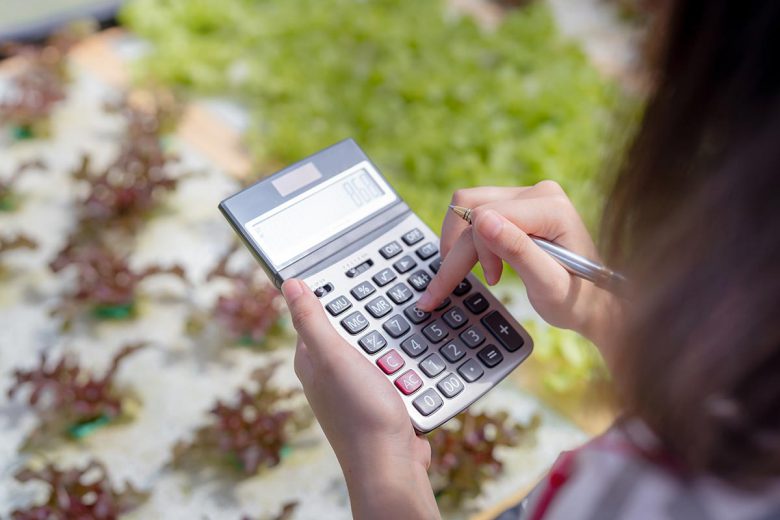If you’re looking for ways to start a garden on a budget, you’ve come to the right place. With some careful planning and preparation, and a creative imagination, you’ll find you can afford to create that lush and beautiful garden you so desire. From soil, compost and mulch to seeds and tools, here are nine tips for starting a garden while being cost-effective.
Why start a garden?
There are a number of benefits to starting a garden, including:
- Growing your own food, reducing your grocery bill and encouraging you to cook more meals at home.
- Homegrown fruits and vegetables are tastier and safer.
- Your kids are more likely to eat what they’ve helped to grow.
- Your kids will learn about responsibility by looking after the garden.
- A study found that dirt increases serotonin (the feel good hormone), reducing stress levels.
- An organic food garden has a positive impact on the climate because leafy plants absorb carbon dioxide.
How to start a garden on a budget
You know why you want to start a garden, but how can you do it if you’re short on funds?
1. Designing your own garden
Designing a garden yourself, as opposed to hiring a designer will save you hundreds of dollars, if not more. Have a look at garden design books and websites that tell you how to build a garden bed, and the ideal growing conditions for every plant, flower, and vegetable. You can either draw the design on paper or use a free landscape design software program.
2. Sourcing the right gardening tools
At a minimum, the gardening tools you’ll need include a spade, pruner, and garden fork. Visit garage sales or flea markets to find used gardening tools, as these will come at a fraction of the cost of buying them new. You can also find cheap or free gardening tools from online classified services, or trade tools with a friend or neighbour for free.
3. Building the garden bed
You can upcycle old bathtubs or wooden pallets, or repurpose containers like troughs, wine boxes, and buckets, to create a raised garden bed. You can also upcycle paint cans, terra cotta pots, or bookcases, if you can get your hands on them. As for the soil, you can either dig your own dirt or buy dirt in bulk from your local nursery.
4. Organise a plant swap
You can swap plants with friends or neighbours for some that you love. You can also check out if there’s any online groups for local gardening enthusiasts that might be holding plant swaps. If so, this is a great way to get the plants you want for your garden easily, often at a lower cost than you would find in the stores.
5. Using cuttings
If a friend or neighbour has a plant you like, whether it’s perennials, shrubs, vines or small trees, ask if you can cut a few pencil-size sticks from it and plant them in your own pots with moist perlite. In just a few weeks or months, the roots and leaves should start to emerge.
6. Finding free mulch
Look around your property or your neighbours’ front yards for any leaves you can collect and cut up to use as mulch. You can also ask your local tree-cutting company if they give away free wood chips for mulch. Your local nursery may also offer free mulch, and if so, don’t forget to bring containers or bags to put the mulch in.
7. Composting at home
You can compost at home by putting food scraps into containers and storing them in the freezer. When it’s full, turn it into a pile in your backyard. You can also add leaves, flowers, unfertilised grass clippings, wood shavings, and shredded cardboard. Crushed eggshells and coffee grounds provide calcium and nitrogen, which are essential to plant health, so feel free to add those too. You can build a compost bin using upcycled wooden pallets, or use an old plastic tub or barrel for storing your compost.
8. Use seeds instead of seedlings
Growing seeds for plants, flowers, fruits, and vegetables instead of purchasing seedlings or buying them fully grown from your local store will save you money. You’ll save even more by swapping seeds with someone else for free. Once you have your seeds, sow them directly in your garden bed, water them, and watch them grow.
9. Harvest your own water
Rather than using water from a hose or a sprinkler (when there’s no water restrictions) and increasing your water bills, install an inexpensive rain barrel or an upcycled garbage can to collect rainwater for use in your garden. Place it under a downspout or attach it to a gutter so the water runs into it. You can then hook a hose to the barrel or feed a hose into the garbage can and use it like a soaker hose to water your garden.
Need a hand getting started?
As you can see, starting your own garden doesn’t have to be expensive. But if you’re short on funds, SRG Finance can help you access some cash with a cash advance loan. You’ll receive your money on the same day or next business day so you can get started on your garden immediately.



